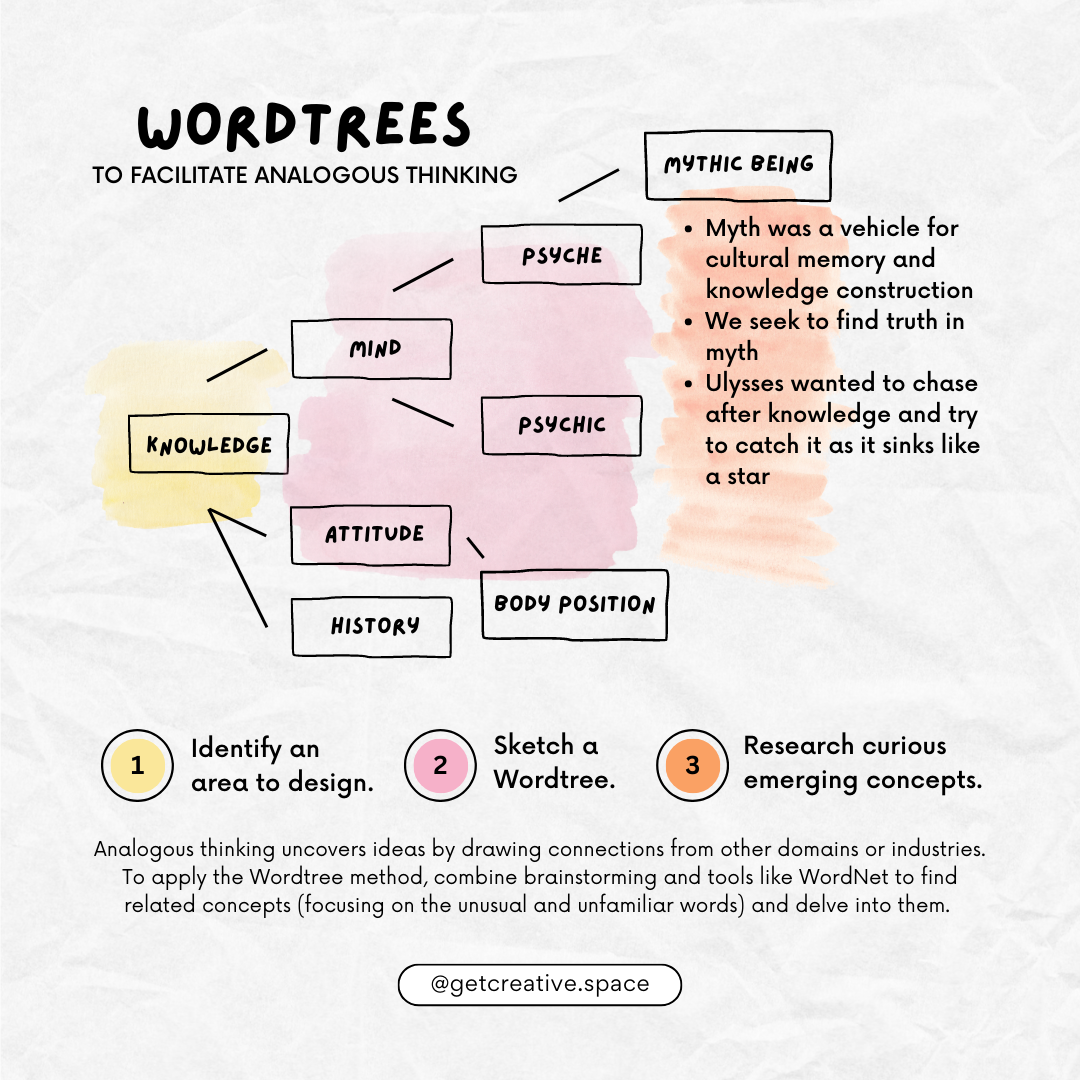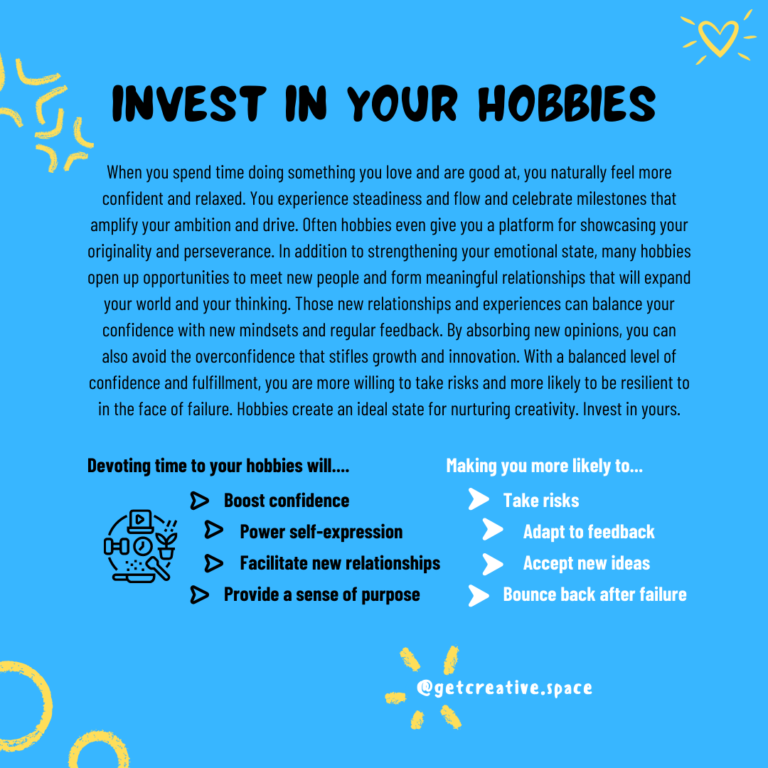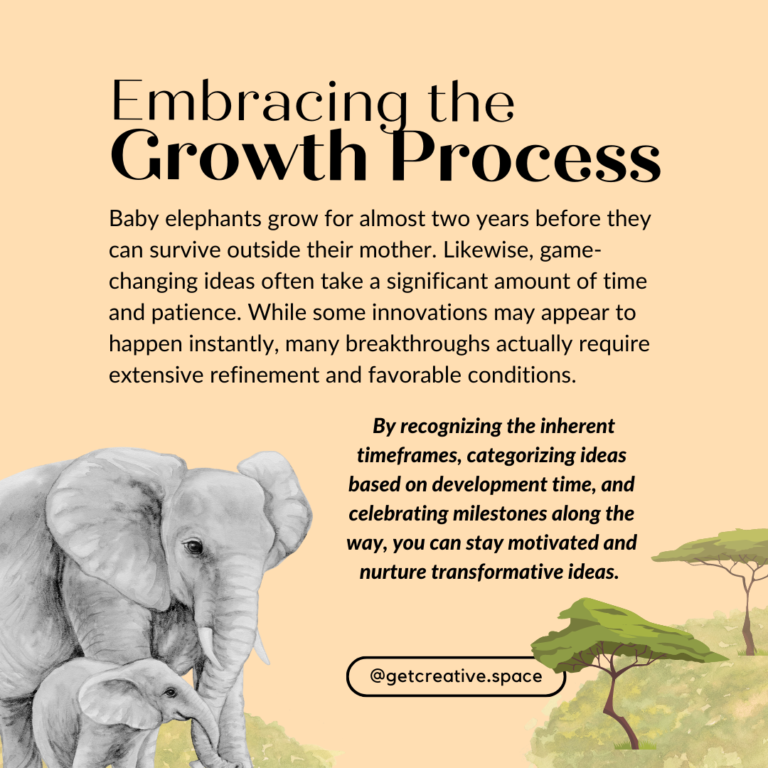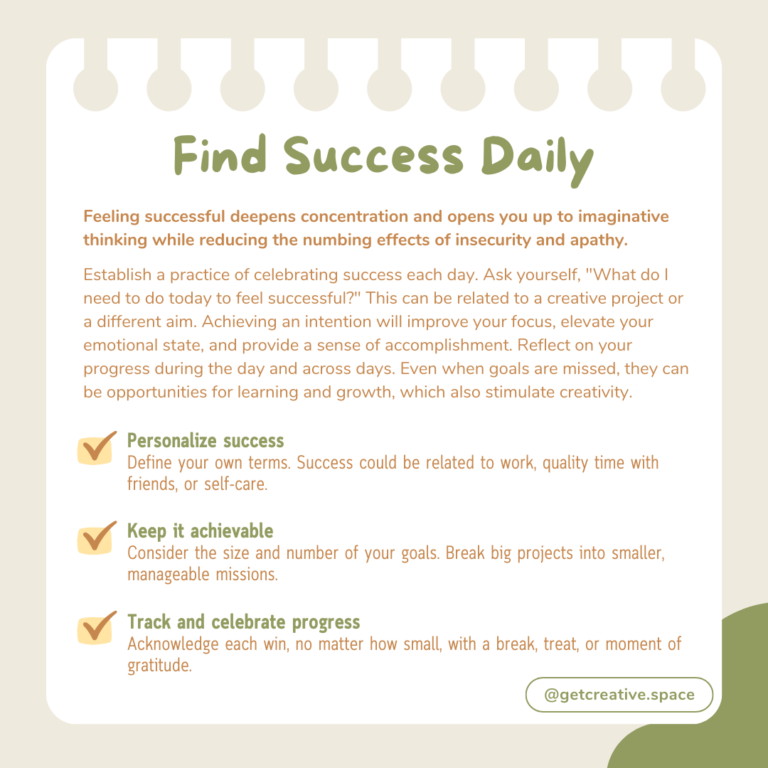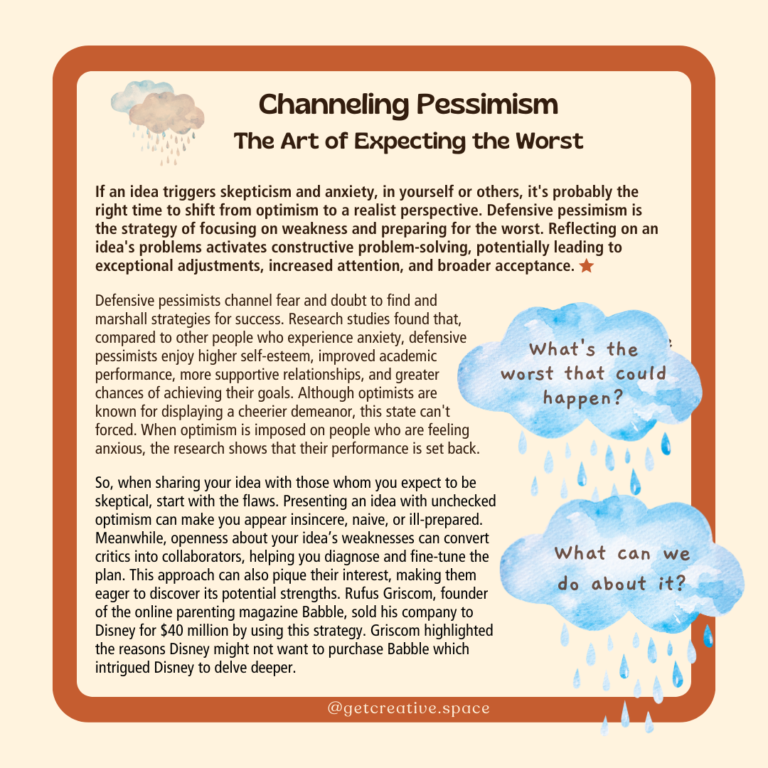WordTrees & Analogies
Analogous thinking is a powerful technique that allows us to reframe problems and explore revolutionary solutions by drawing connections from diverse domains or industries. Analogy thinking has been the magic feather for many successful innovations: burrs from a burdock plant inspired Velcro, sharkskin inspired speedos, and the beak of the kingfisher bird inspired bullet trains.1 By identifying similarities between seemingly unrelated concepts, we can break free from conventional thinking and discover uncharted possibilities.
Wordtrees
Wordtrees are a practical approach for inspiring analogous thinking.2 3 Apply this method to a design problem with the following steps.
- Identify areas to design. List user priorities and needs as well as key structural features and functions.
- Sketch a word tree. A word tree connects layers of hypernyms and troponyms (related words that are more general or specific). Combine brainstorming and automatic word generation tools such as WordNet to get outside of the box.4
- Research emerging inspirational concepts. Focus on words that are unusual or unfamiliar because they are more likely to be associated with distant domains.
- Design with the analogies in mind. Let these ideas stimulate novel connections and broaden the range of potential solutions.
There are two impressive variations that can add to your ideation. For one, many innovators have turned to nature for ideas. Along with being a vibrant symphony, nature imparts a calming effect that restores concentration.5 Secondly, you can amplify your inspiration by finding images related to some of the associations. In one study, pictures inspired more creative analogies than text alone or even words with pictures.6
Applying analogical thinking within a team will boost creative problem-solving. Opening the discussion to different domains challenges groupthink and helps the team overcome confirmation bias, the tendency to rely on familiar ideas.7 A team with diverse experiences is even more equipped to notice features that can be redesigned and to connect them with creative, meaningful analogies.8 Alone or within a team, analogical reasoning is powerful a tool to challenge conventional thinking, overcome biases, and explore new possibilities.
- How Analogy Thinking Can Help Entrepreneurs Innovate: 7 Examples. Creo Incubator.
- Linsey, J. S., Markman, A. B., and Wood, K. L. (April 4, 2012). “Design by Analogy: A Study of the WordTree Method for Problem Re-Representation.” ASME. J. Mech. Des. April 2012; 134(4): 041009. https://doi.org/10.1115/1.4006145
- Linsey, J. S., Wood, K. L., & Markman, A. B. Increasing Innovation: Presentation and Evaluation of the Wordtree Design-by-Analogy Method. Volume 4: 20th International Conference on Design Theory and Methodology; Second International Conference on Micro- and Nanosystems. https://doi.org/10.1115/DETC2008-49317
- Marshall, Scott & Crawford, Richard & Jensen, D.D.. (2015). Analogy seeded mind-maps: A simple and quick design-by-analogy method. 122.
- Nurtured by nature. (2020b, April 1). American Psychology Association.
- Malaga, R. A. (1999). Effect of stimulus modes and associative distance in individual creativity support systems. Proceedings of the Hawaii International Conference on System Sciences.
- Paletz, S. B., Schunn, C. D., & Kim, K. H. (2013). The interplay of conflict and analogy in multidisciplinary teams. Cognition, 126(1), 1-19. https://doi.org/10.1016/j.cognition.2012.07.020
- Dunbar, Kevin. (1995). How scientists really reason: Scientific reasoning in real-world laboratories.

